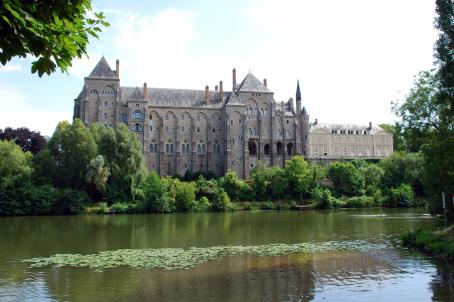Church of Notre-Dame
The Romanesque church Notre Dame de Brissarthe was built in the 11th century on a Merovingian site and the remains of a primitive church. It was the first priory of the Abbey St Serge d'Angers and features an impressive nave. In 1730, lightning struck the tower, partially destroying it. The tower and a presbytery are rebuilt on the south arm of the transept. It was at this time that the priory was dissolved and the church became a simple parish church.
About this building
The Church Notre Dame de Brissarthe is a beautiful Romanesque building, dating to the eleventh century, allegedly built on the site of a Merovingian cemetery and a church that would have, in 866, sheltered the advance of the Norman troops. There are no traces of the early church of Brissarthe, except some carved stones that were reused in the walls, giving evidence of the previous building.
In the twelfth century, the lord of Brissarthe donated the church to the Abbey of Saint-Serge d'Angers so that the latter could install a priory. The large nave is impressive with its framework of "chevrons-forming-farms" of the twelfth or fourteenth century, a very rare construction. The south wall is pierced by small, narrow, flared windows that can be used for defense. The facade dates from the 12th century.
In 1730, lightning struck the tower and caused a collapse. A year later, the tower was rebuilt and a presbytery added on the south arm of the transept, against the south side of the church. The new bell tower was massive, supported at the four corners by thick buttresses. It is crowned by a slate roof in the shape of a ‘Prussian helmet’ and surmounted by a pretty steeple called a ‘swallow's beak’. It was at this time also that the priory was dissolved and that the church became a simple parish church. The asymmetry of its volumes gives a strange elegance to the church.
The interior features beautiful decorations: the majestic altar, built in the 18th century at the bottom of the choir, as well as the remarkable altarpiece and the statue of the Virgin of Piety (16th century) and objects of worship from the 19th century: the ciborium, chalice and monstrance.






